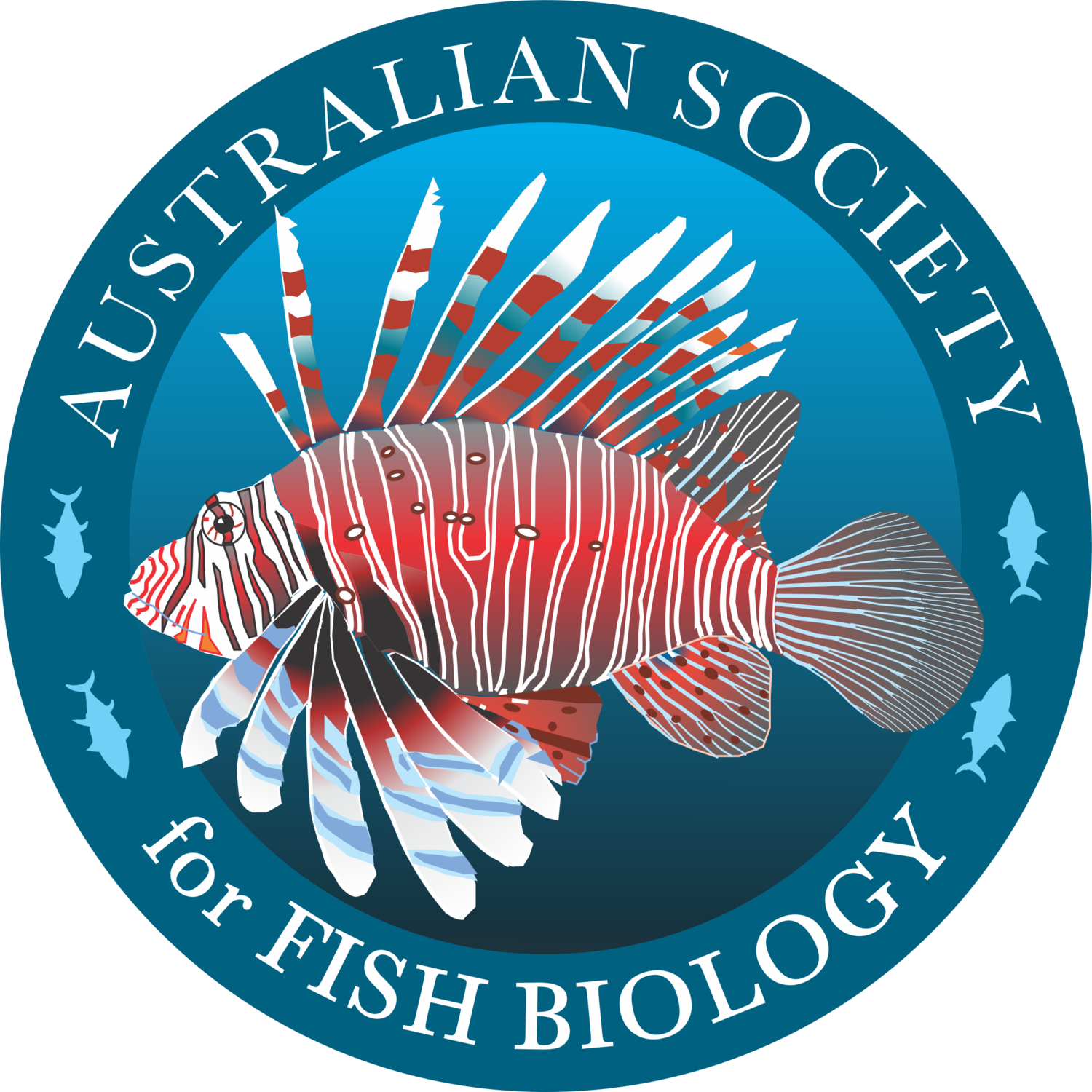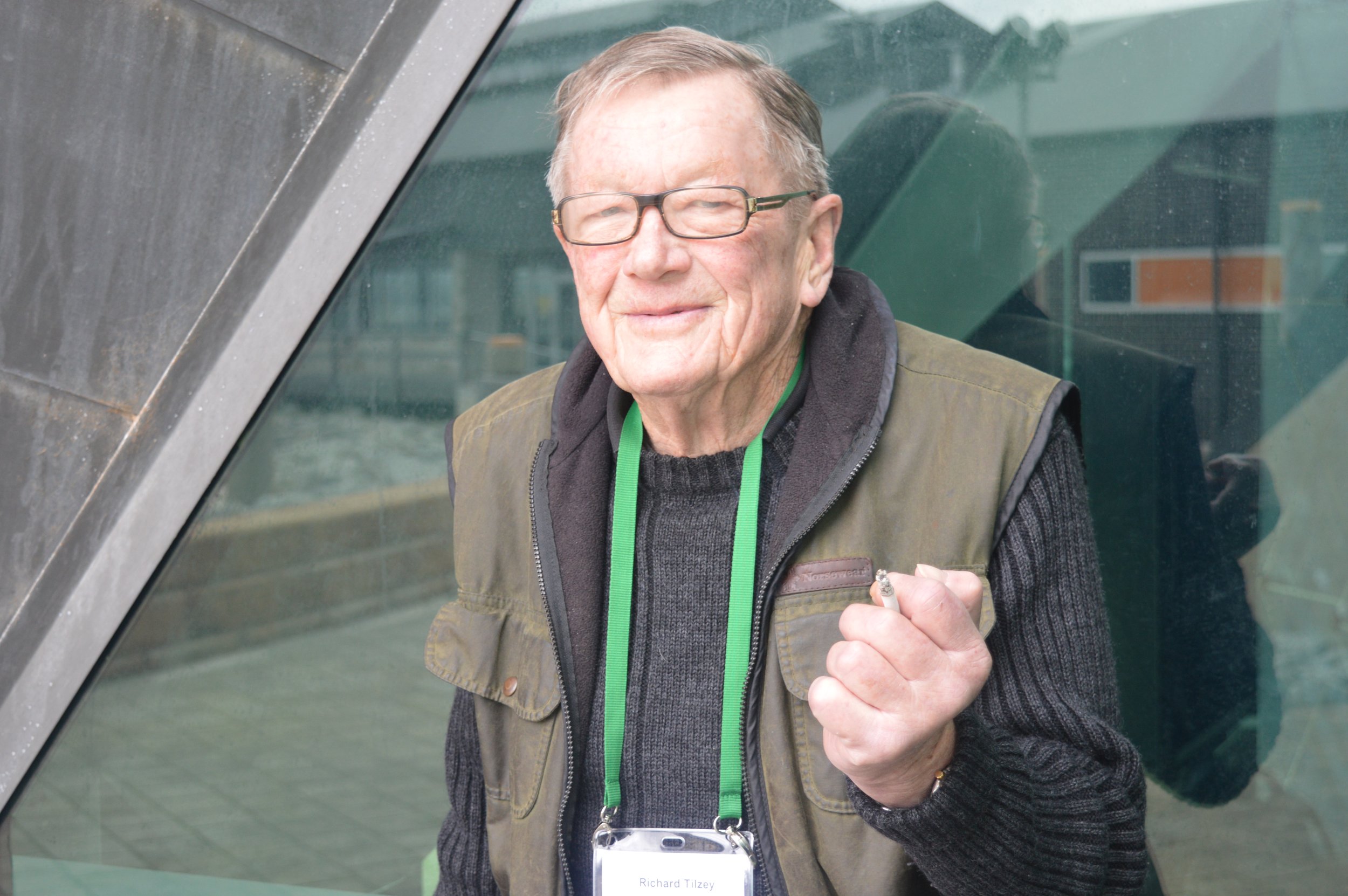Remembering Richard Tilzey
Richard Tilzey at the 2017 ASFB conference in Albany, WA.
The Australian Society for Fish Biology was saddened to learn that Richard Tilzey died on 18 April 2022, aged 78.
Richard, better known as ‘Tilz’ or ‘Tilzey’, was a founding member of our society in 1971, President from 1981 to 1983, and received lifetime membership in 2016. Tilzey was an iconic and much-loved ASFB member. Many will remember him at our conferences for his encouragement and sage advice to younger members, his banter and humour, his crazy dancing style, and for his never-ending supply of stories!
We were fortunate to interview him about his life and career in 2017, during the ASFB conference in Albany.
"I think it’s probably apt that I’ve got a cigarette in my hand, because everybody knows me for that.” Richard Tilzey at the Albany conference in 2017. Photo: Andrew Katsis/ASFB
AK: Would you mind introducing yourself and where you worked before you retired?
I’m Richard Tilzey. I’m a founding member of the society, an ex-President at one time, and an honorary life member, which I was very honoured to receive. I’ve worked with fish most of my working life. I started working at the top, so to speak, in the Snowy Mountains, working on salmonid fisheries, and finished at the bottom, working on orange roughy and deep-water species a kilometre down. So I’ve been involved in freshwater and marine fisheries over quite a long period.
I worked for what used to be the Bureau of Rural Sciences for 20 odd years, in the Fisheries division there, and was actively involved in getting the Southeast Fishery on a reasonably good footing—with the introduction of quotas, the buy-out of the fleet, et cetera. Other jobs: I’ve been on the Murray-Darling Basin Fish Strategy Group… I’ve done lots of this and that.
I’m now retired, and I come to the meeting [ASFB conference] just to try to keep my brain up to speed with what’s going on, and also obviously to catch up with many of my old colleagues over a drink.
Richard Tilzey makes faces for the camera at the 2017 ASFB conference in Albany, with Dianne Bray and Martin Gomon. Photo: Andrew Katsis/ASFB
AK: Do you come to most ASFB conferences?
I went to the one last year [Hobart 2016], but prior to that I missed three. But I’m going to make sure that I keep the continuity going as long as I can walk.
AK: What was the process of getting the society set up?
“I count myself lucky to have had a career with fish, because I’ve always put fish first and humans second when it comes to sustainability, that’s for sure.”
It started in Sydney, because at that time CSIRO was based in Sydney, as well. The first meeting started off in the basement room of New South Wales Fisheries, which were then based in Kent Street in the heart of the city there. And then we moved over to another basement room in the Australian Museum. And then other branches started in other cities, and the thing took off. I think one of the first meetings was out in the Narrandera fisheries research station, and it was a pretty wild meeting.† That’s how the society started, and it has sort of grown and grown since.
AK: I have to ask, what made that first meeting so wild?
Basically, because we were all more or less under the same roof, and the society was a lot smaller then, and certainly a lot less formal than it is today. Initially, we started out with just a day and a half of presenting papers, and now the meetings have grown, quite often having a one-day workshop and two or three days of papers. And the membership, I’m told now, is over 400; whereas in the early days, it was way under 100.
“R.D. Tilzey”, listed as a member in the first ASFB newsletter (dated 23 August 1971).
AK: Did you ever think that the society might grow so large?
Well, we were certainly hoping it was that way. We went through a good period back in the Whitlam years, when UNCLOS [The United Nations Convention on the Law of the Sea] came in, and Australia received its exclusive economic zone, the 200 nautical miles zone. And the Commonwealth back then threw a lot of money around the country; I think all the state fisheries benefitted. And the number of scientists must have doubled or tripled in that period—it was quite a big explosion.
Richard Tilzey receives lifetime membership to the Australian Society for Fish Biology at our 2016 conference in Hobart. Photo: Andrew Katsis/ASFB
AK: What’s something that you achieved during your career that you’re really proud of?
I think, getting the South East Fishery on a reasonable keel. Obviously, that was a whole team of us, but that involved a hell of a lot of politicking, introducing catch limits, getting the ITQ system into place, and then getting the money—which was hard to get at the time from the Commonwealth—to buy out half the fleet and get it on a reasonably stable basis.
I get very frustrated with Lake Eucumbene in the Snowy, which is where I cut my teeth. I get frustrated these days when absolutely nothing is being done up there, and they don’t have a clue what’s happening with the fisheries. So I would call myself an optimistic cynic, but sometimes the latter takes over.
Richard Tilzey pulls a boatload of ASFB members at the 2017 Albany conference. Photo: Andrew Katsis, ASFB
AK: How much of your job was science, and how much was politics?
When I was in Canberra, it was probably 50-50. We did a little bit of hands-on research, but there was a lot of politicking, with industry in particular. I think one of the smartest moves we did was to actually get one or two industry members on the stock assessment groups, so they started to understand the intricacies of trying to get a handle on what the stocks are doing.
We’ve had frustrating moments and we’ve had satisfying moments. And I love fishing recreationally, as well, so I count myself lucky to have had a career with fish, because I’ve always put fish first and humans second when it comes to sustainability, that’s for sure.
AK: Do you still fish? What do you tend to catch?
These days I’ve got very bad feet, so I tend to do most of my fishing from a little tinny, catching flathead, bream, and stuff like that. Occasionally, I’ll go outside with some friends who have a decent-sized boat, and we’ll catch a few kingfish and tuna. And I still try to get up to the Snowy, to catch trout.
† The ASFB did host a conference at Narrandera in 1983. However, Tilzey may have been remembering the 1972 Australian Society for Limnology conference, which was also held at Narrandera.






